Flying taxis might be closer to lift-off than we expect
Once the thing of sci-fi legend, blue-sky thinkers are spending billions to get the industry off the ground, says Sean T Smith

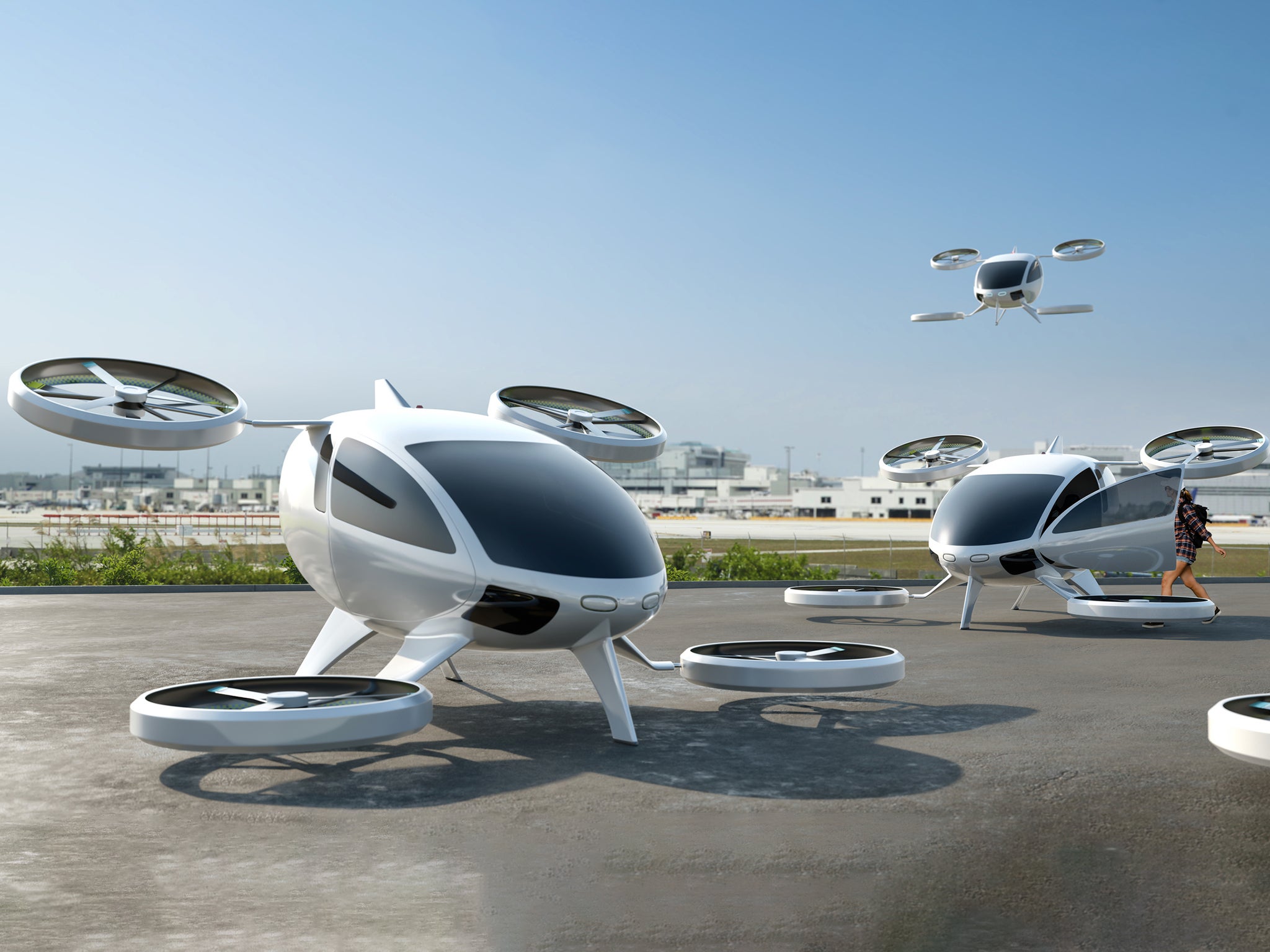
Imagine being able to stroll to your local “vertiport”, where you can jump aboard an electric air taxi. After taking off vertically like a helicopter, it will transition to a plane, whisk you noiselessly across the city sky, then drop you gently at your crosstown destination.
It could be a reality sooner than you think, as fleets of flying taxis could start to appear in major cities within a decade.
eVTOL stands for Electric Vertical Take-Off and Landing vehicle, and this entirely novel aircraft is driving the “urban air mobility” movement.
Its advocates believe that advances in lightweight electric battery technology combined with the vehicle’s agility in tight spaces will make electric aviation a safe, clean, quiet and affordable alternative to our traffic clogged roads.
At the moment there are an estimated 200 companies around the world working on 420 different types of flying vehicle, and vying to become pioneers in electric aviation. They aim to bring the first Advanced Air Mobility (AAM) services to urban areas in the next decade.
When animation company Hanna-Barbera created The Jetsons in the 1960s – a cartoon series about a futuristic American family in a world of flying cars and robots – they couldn’t have envisioned that one day their imagined future would have the potential to become our reality. Indeed, when Swedish inventors and eVTOL pioneers Peter Ternstrom and Tomasz Patan came to name their company Jetson, they paid the ultimate tribute to their prototype’s animated ancestors.
Weighing in at just 190lbs, their Jetson ONE is part drone and part flying sports car, and is already available if you have $92,000 to spare. But with a battery-powered flying time of just 20 minutes, it’s being marketed as just a fun, recreational toy for the wealthy.
But eVTOL technology is set to become a very serious big business aimed at the mass market. According to The Financial Times, investors have poured $7bn into eVTOL companies in the past three years. The appeal of clean, green, noise-free flight is expected to see the eVTOL market grow to $20bn by 2027.
Developing and certifying a novel aircraft is a process that takes years, and would be prohibitively expensive for eVTOL start-ups without the help of investment from major airlines.
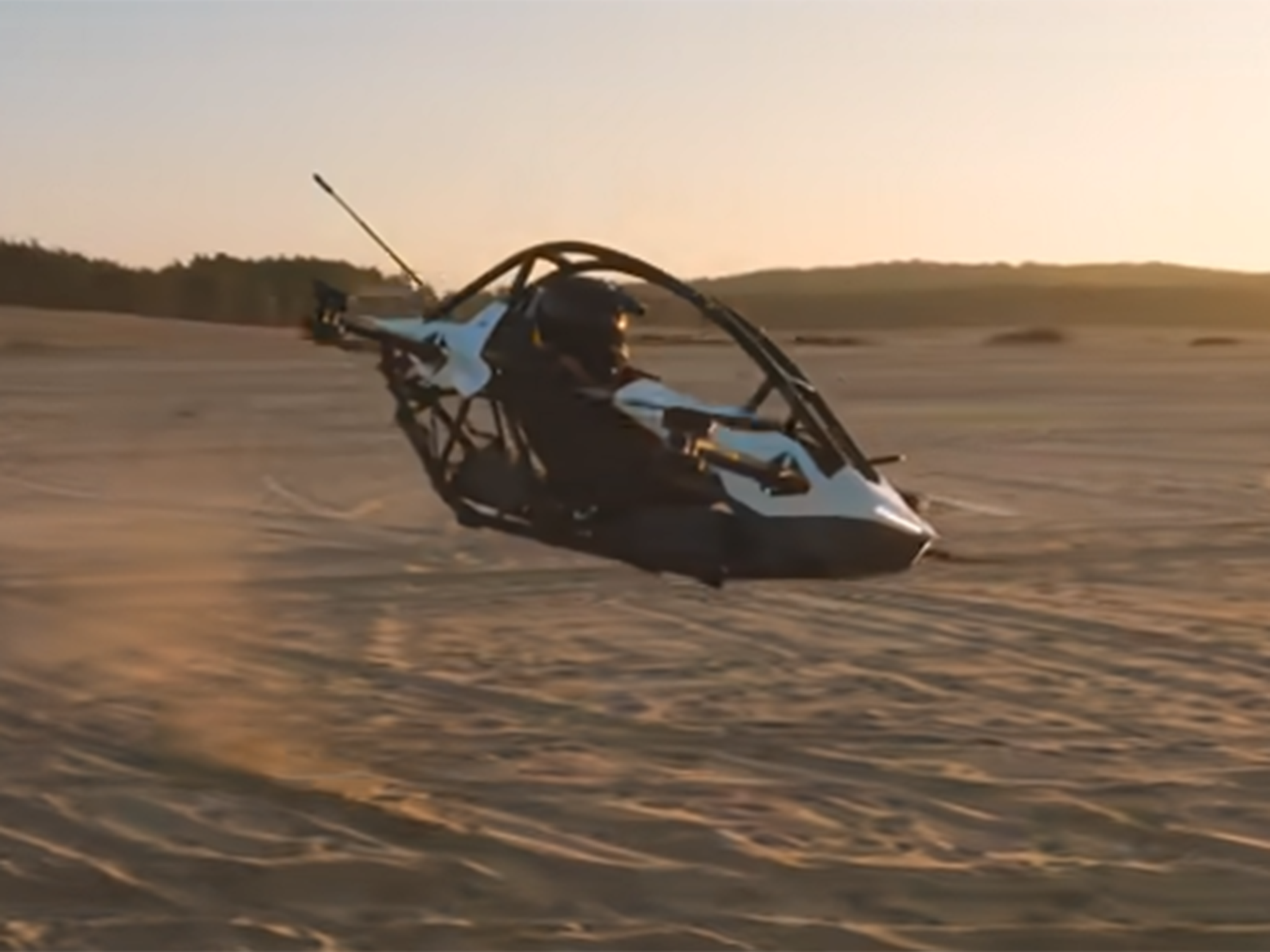
That’s why if you do find yourself on an electric air taxi in the next decade or so, it will almost certainly be ferrying you to or from a large airport while sporting the livery of a major commercial airline.
Most of the aviation giants have already laid their bets backing the eVTOL model they think stands the best chance of entering service as an air taxi by 2030.
In the United States, Joby has been backed by Delta Airlines, while United Airlines has partnered with Eve Air Mobility and Archer Aviation. But based in Bristol and backed by both American Airlines and Virgin Atlantic, it’s the UK’s Vertical Aerospace that leads the way in the advanced eVTOl sales with a pre-order book of 1400 projected to be worth $5.6bn in revenue.
When its VX4 prototype made its first successful tethered test flight in September 2022, Stephen Fitzpatrick, founder & CEO of Vertical, said “This moment represents a small step for Vertical Aerospace, but it’s a giant leap forward for British aviation. For more than 100 years the UK has been a global leader in aviation and today, in the 21st century, Britain is leading the world in the development of zero carbon aircraft.”
When I catch up with Samuel Emden, of Vertical Aerospace, he explains that the VX4 is projected to be capable of transporting a pilot and up to four passengers at top speeds of over 200 miles per hour, while producing minimal noise and zero emissions from an electronic propulsion unit co-engineered by Rolls Royce.
An enormous picture of the VX4 serves proudly as Emden’s virtual background.
It has the fuselage of a chopper spanned by a fixed wing on which four smaller rotors are mounted. To my uninitiated eye, it very much resembles a cross between a helicopter and a small plane.
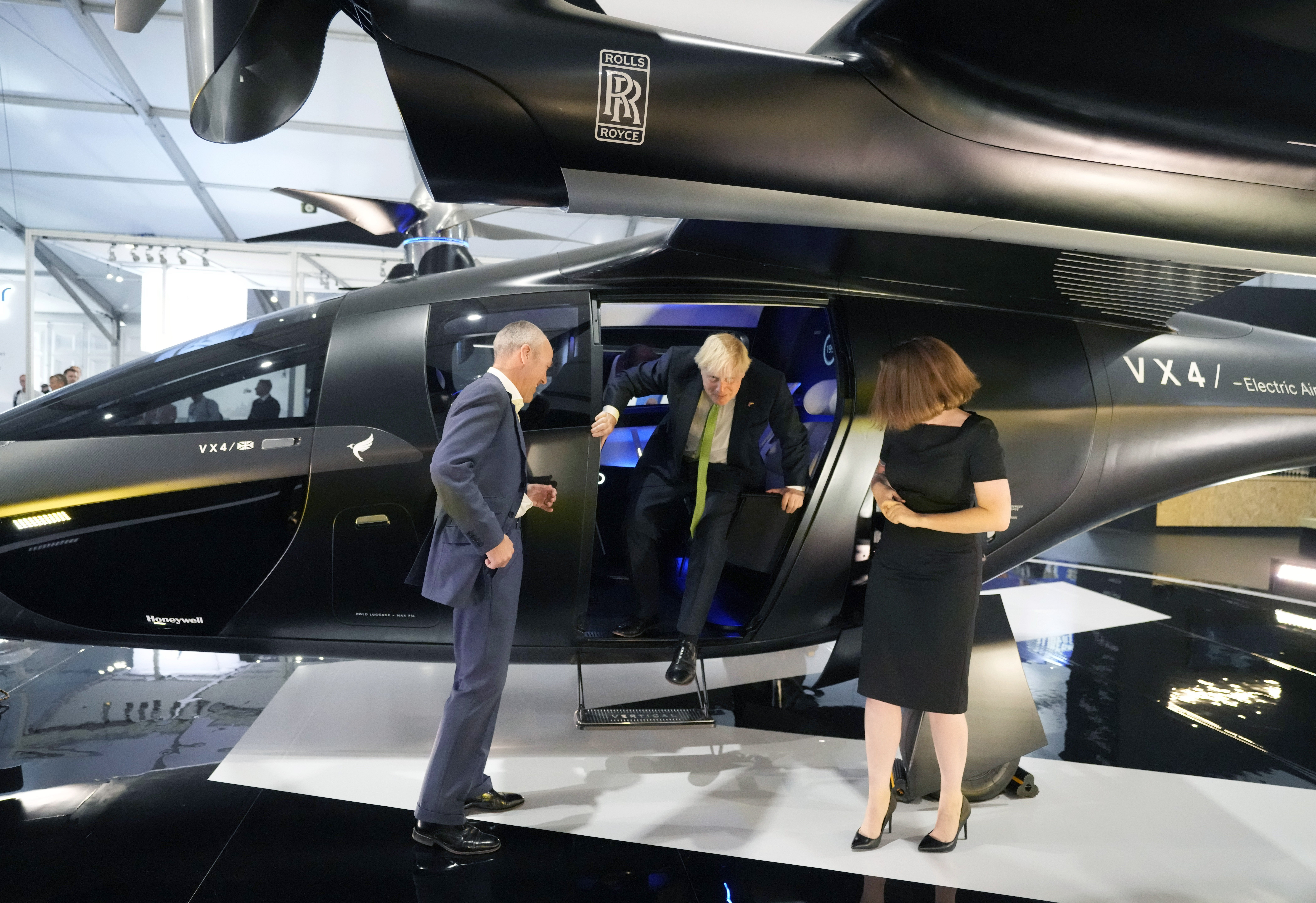
According to Emden, with its bank of four wing-mounted, moveable rotors, the design is predicated on a safety first approach:
“There’s enormous architectural redundancy baked into the system so that if any of them fail, it can still maintain level flight and effect an emergency landing safely,” he says
Given that it’s hoped the VX4 is expected to fly above schools, hospital and care homes in densely populated urban settings, it will have to certify to the most stringent safety standards.
“To achieve certification from the UK and European regulators to fly over urban air space, the VX4 will have to pass the same safety threshold as that used for commercial airliners – that’s a catastrophic failure rate of just one in a billion flying hours. We have to certify the same standard as aeroplanes because the regulators see this as potentially a mass transport option in a way that helicopters were never going to be,” says Emden.
The first phase of the eVTOL story is likely to be about “helicopter displacement”. Helicopters have never become a means of mass transit in urban areas because they are far too noisy and unsafe. Fuel and maintenance costs have meant that they have remained restricted to very wealthy users.
This moment represents a small step for Vertical Aerospace, but it’s a giant leap forward for British aviation
But even more than safety and maintenance cost limitations, it’s noise that’s always held helicopters back. They’re deeply unpopular with residents, and the fact that planning authorities have authorised so few Helipads in greater London perhaps tells its own story.
The fact that eVTOL aircraft are projected to be safer, cleaner, cheaper to maintain and (crucially) 50 per cent quieter than helicopters is likely to be important in terms of winning the battle for public acceptance and overcoming nimbyist objections to Vertiports.
Vertiports are an essential part of the battery recharging infrastructure required by a thriving eVTOL air taxi sector. An area the size of London, for example, is likely to need quite a few of them dotted around in easily accessible locations.
Just as airports generate their revenue from airlines, Vertiports will sell their services to eVTOL operators for recharging and passenger processing.
Since its first tethered flight in September, Vertical have been increasing the level of challenge in test flights by “expanding the flight envelope, and will move on to untethered, thrust borne, and wing borne flight,” says Emden.
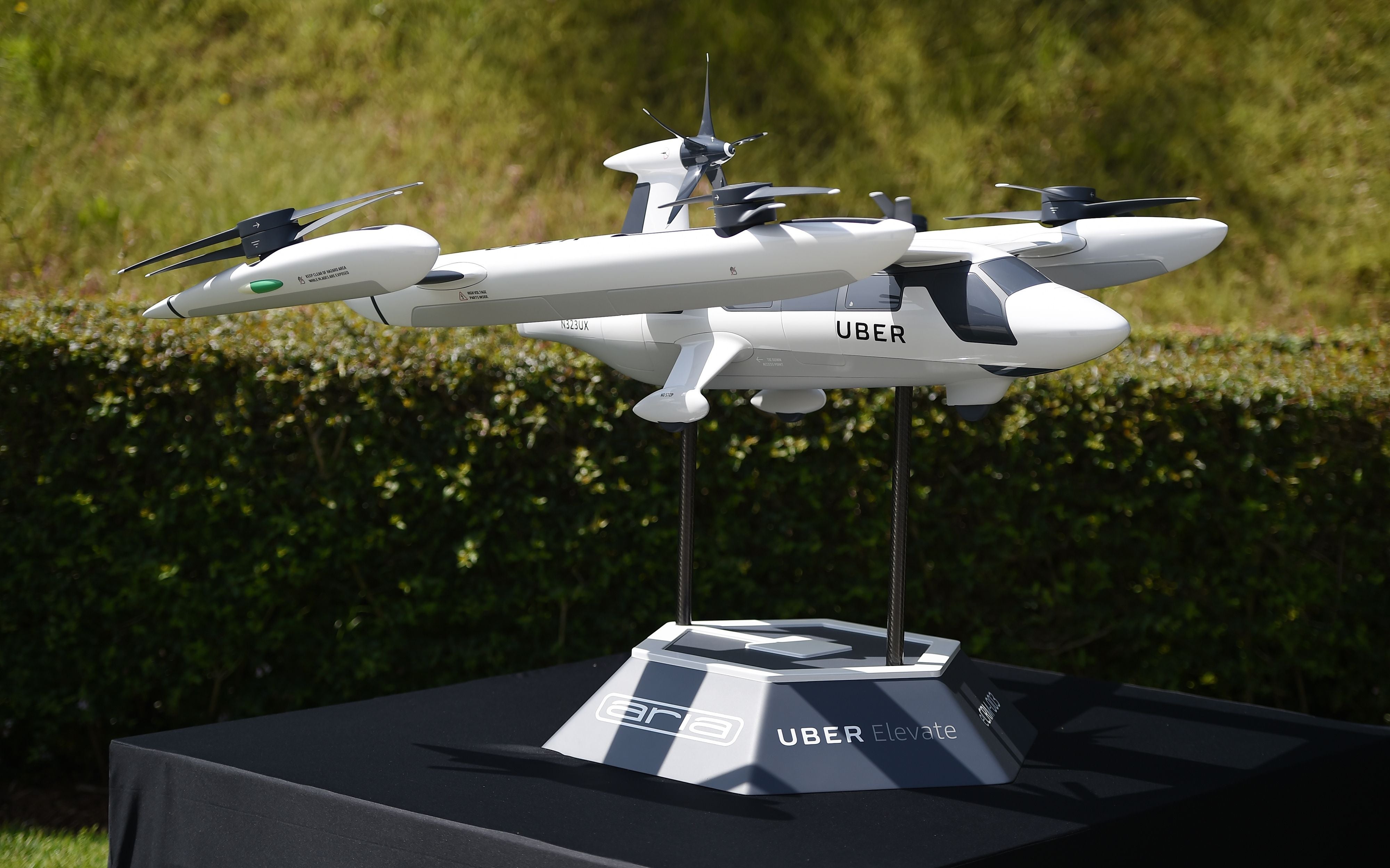
A key staging post is likely to be Future Flight Challenge 3 – a partly government-funded project which aims to demonstrate the feasibility of an eVTOL transport system by coordinating the efforts of manufacturers, operators and infrastructure providers.
Tentatively scheduled for 2024, Virgin Atlantic will operate Vertical’s VX4 on demonstration flights between Heathrow and London City airport. One test flight will make the journey from Bristol Airport to an airfield in southwest England, while another will travel from London Heathrow Airport to a specially designed vertiport.
In the United States, one of Vertical Aerospace’s main manufacturing rivals, Joby is also planning to operate their own air taxi service. Having acquired Uber’s air taxi division in 2020, Joby CEO JoeBen Bevirt expects his future passengers to be able to use just one app to book a “seamless multi modal travel experience” that will Uber them by car to their nearest vertiport for a short eVTOL transfer to the airport to connect to a conventional Delta airlines flight.
But who will be able to afford those first eVTOL flight transfers projected to take off as soon as 2026?
Perhaps rather optimistically, eVTOL industry leaders say that they expect the price point for flying taxis to quickly follow the S Curve trajectory of other new technologies, where early adopters pay premium rates before an explosion in supply drives prices down towards mass-market affordability.
When it’s at scale, Bevirt projects that a Joby air taxi service will cost less than a dollar per seat mile to operate and intends to set the price point at around $3 per seat mile for each passenger – a rate comparable to a conventional taxi.
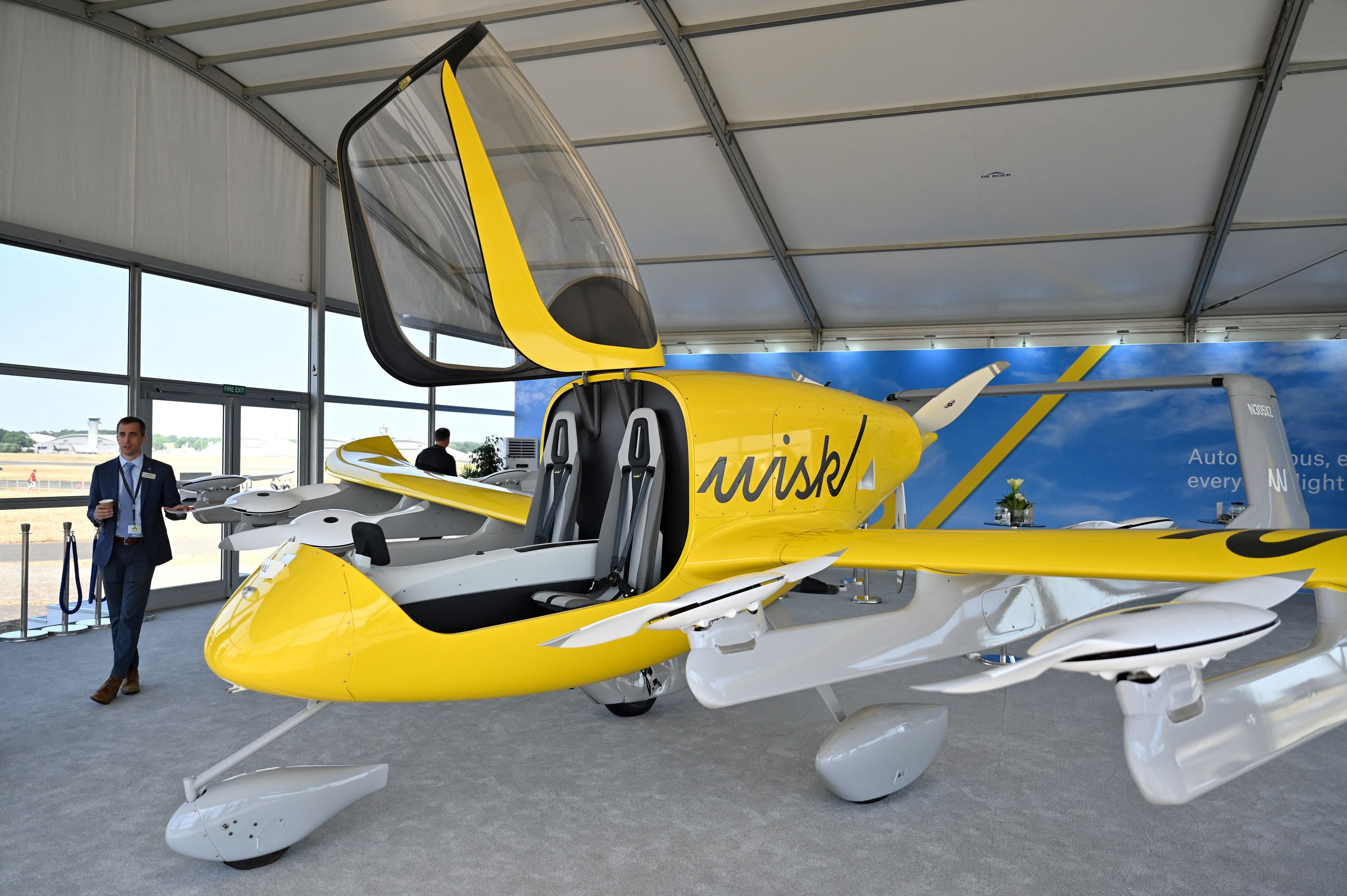
But not everyone is convinced of the economics, arguing that it’s difficult to see how a piloted eVTOL service carrying only two to four passengers can ever operate a sustainable mass market business model.
Other eVTOL rivals are convinced that it’s the expensive pilot that must be jettisoned to make way for an extra paying passenger.
Backed by Boeing, California-based Wisk have developed their 6th generation four passenger, self-flying eVTOL. “Autonomy is critical to safety, scalability and ultimately, profitability,” a spokesperson for Wisk tells me.
For the time being at least, though, most of Wisk’s main rivals are committed to piloted eVTOL aircraft, because it’s seen as a quicker route to regulatory approval. But the idealistic new sector is not without its pragmatists.
Prompted by doubts about electric battery power and no longer convinced by the urban air taxi business model, Dr Seyed Mohseni – formerly CEO of Samad Aerospace – now instead intends to go cross-country.
Now relaunched as ARC Aersosystem – which stands for Advanced Regional Connectivity – Mohseni is dropping his commitment to electric flight in order to extend his range and develop a larger hybrid “VTOL” aircraft suitable for operating a longer distance regional taxi service between cities.
Projected to operate at a fraction of the operating costs of current helicopter taxi services, Mohseni is marketing ARC’s new VOTL prototype, the Linx P9, as “a missing link” between cities ill-served by clogged roadways and sub-standard rail services.
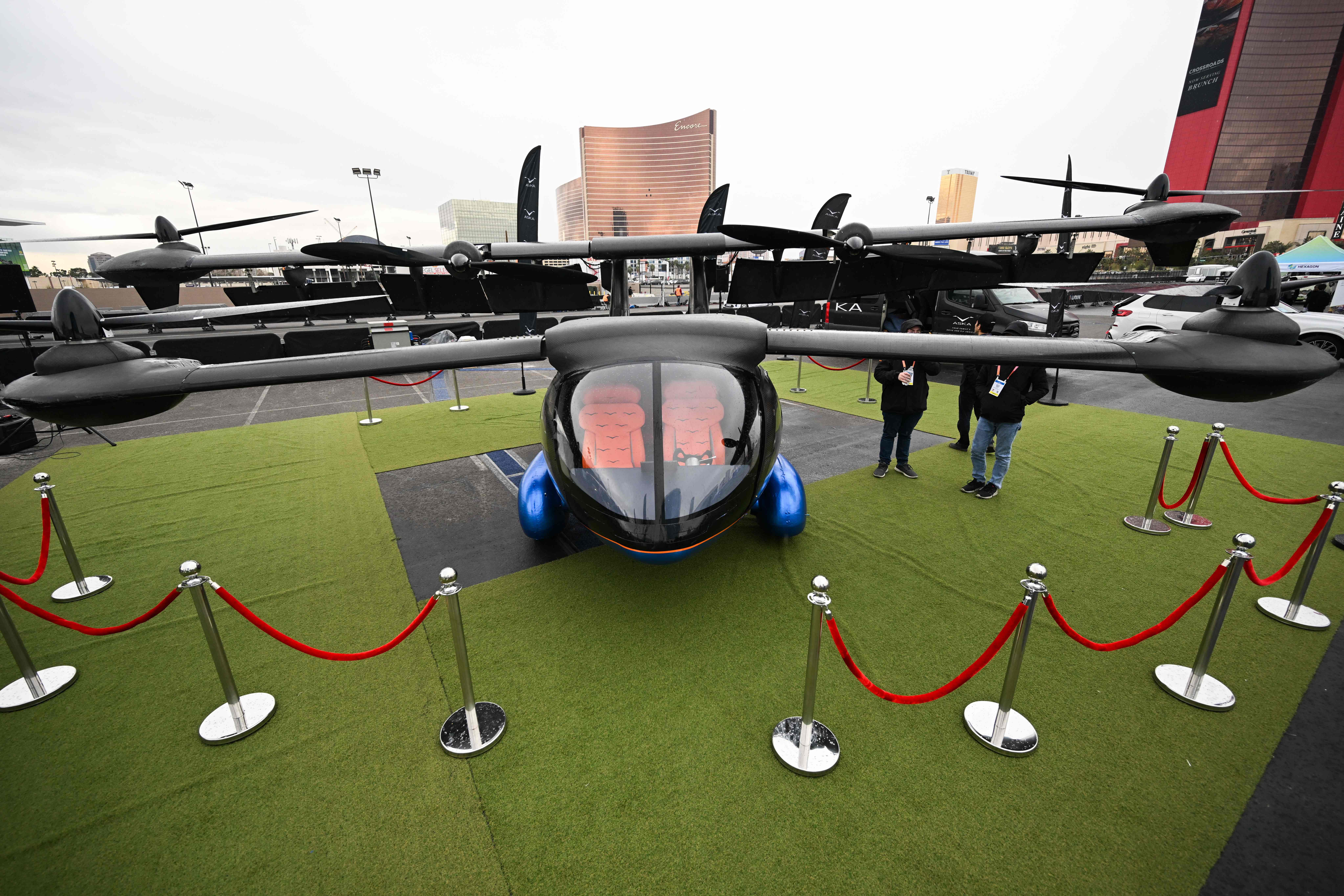
At the moment using the UK’s fragmented rail system it takes over two hours to commute between Oxford and Cambridge, he explains. By increasing the number of passengers on each flight to at least nine – and perhaps as many as 19 – Mohseni expects his Linx P9 to make the trip in about 30 minutes at a cost of around £70 to £80 per passenger.
He’s also pitching the Linx P9 as a way of connecting left-behind rural communities at a fraction of the per capita cost of maintaining rail infrastructure in remote areas. While the intra-city urban air taxi business model appears to be dependent on a network of “Vertiports”, the cross-country model advocated by Mohseni requires far less infrastructure.
“Almost every village has a football field – we could utilise that. What’s to stop every sports field containing a landing area? What if people were able to get wherever they wanted to go in the country in a safe, affordable way that was universally accessible, and not overly dependent on expensive infrastructure?” he suggests.
Although requiring a far greater range has made it necessary to move away from electric-powered flight, Mohseni sees his current hybrid prototype as a stepping stone towards a hydrogen-powered Linx9 in the future.
It’s perhaps just as well that the eVTOL industry is populated by optimistic blue sky thinkers, because it’s clear that anyone hoping to operate a clean and profitable air taxi service anytime soon still has quite a few major barriers to overcome.
If the nascent eVTOL industry can overcome the limitations of clean energy, develop a vertiport infrastructure, source and train a regiment of new pilots, and integrate seamlessly into existing air traffic management systems while also satisfying the regulators’ strictest safety requirements, it might just make it. But much of the optimism driving such high levels of speculative investment in eVTOL companies predates the pandemic and the war in Ukraine.
In an inflationary environment with interest rates hiked for the foreseeable future, industry analysts anticipate turbulence ahead.
The closure late last year of Kittyhawk – the electric air taxi start-up backed by Google founder Larry Page – is unlikely to be the last eVTOL electric aviation casualty.
Rather ominously, analysts are predicting a period of “consolidation” as the market coalesces around the eVTOL manufacturers expected to reach mass market penetration. As a child of the seventies (and as a fan of The Jetsons), I hope enough of them stay the course.






Join our commenting forum
Join thought-provoking conversations, follow other Independent readers and see their replies
Comments